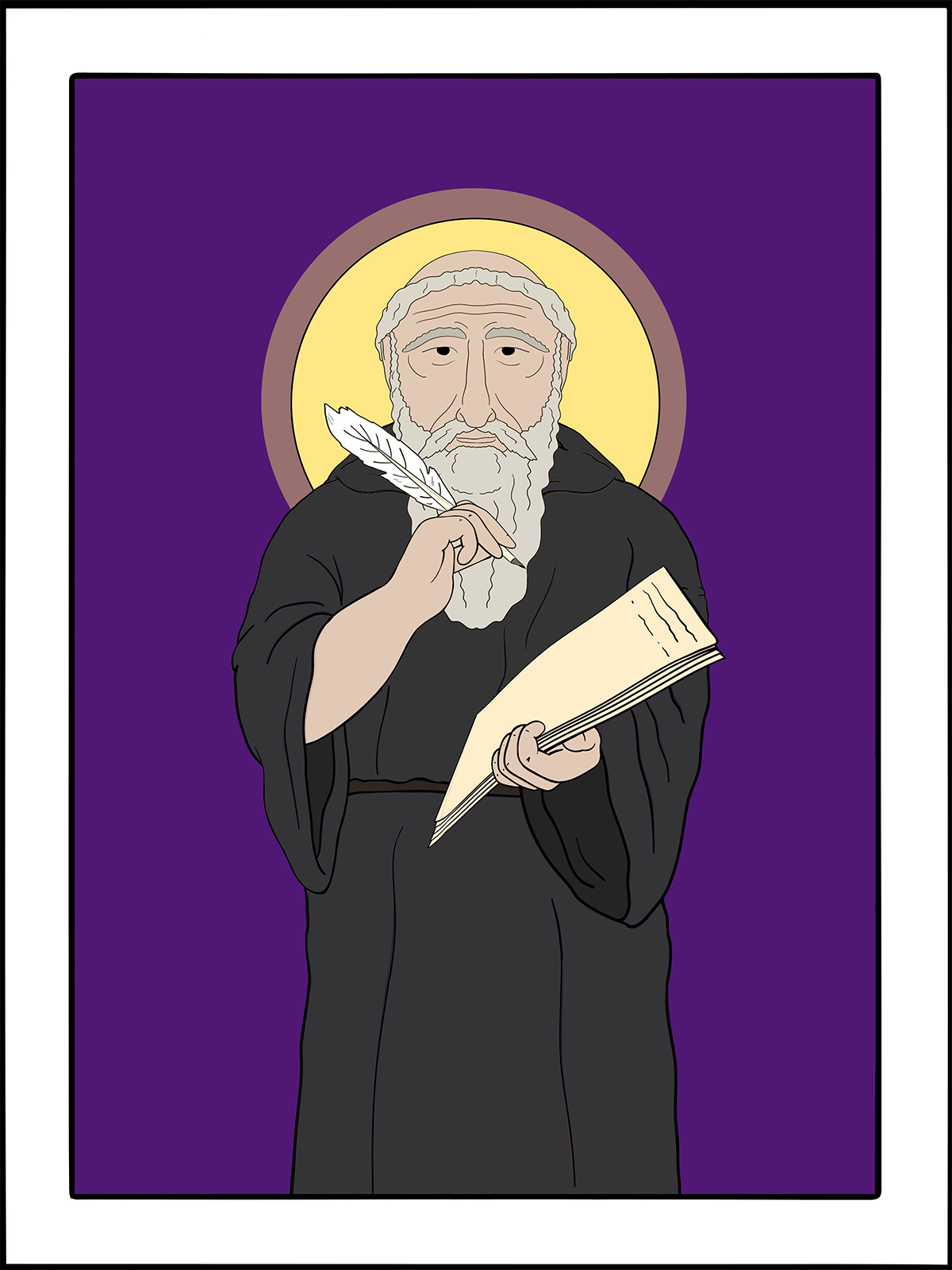
May 25
Bede
Priest and Historian, 735
art by Rev. Kirsten Kohr of Geneva, Ohio Almighty God, who has enriched your church with the learning and holiness of your servant Bede: Grant us to find in Scripture and disciplined prayer the image of your Son our Savior Jesus Christ, and to fashion our lives according to his likeness, to the glory of your great Name and to the benefit of your holy church; through the same Jesus Christ our Lord. Amen.
At the age of seven, Bede’s parents brought him to the nearby monastery at Jarrow (near Durham in northeast England) for his education. There, as he later wrote, “spending all the remaining time of my life... I wholly applied myself to the study of Scripture, and amidst the observance of regular discipline, and the daily care of singing in the church, I always took delight in learning, teaching, and writing.” Bede was ordained as a deacon at nineteen and as a priest at thirty.
Bede was the greatest scholar of his day in the Western church. He wrote commentaries on the Scriptures based on patristic interpretations. His treatise on chronology remained standard for centuries. He also wrote on orthography, poetic meter, and especially on history. His most famous work, The Ecclesiastical History of the English People, remains the primary source for the period from 597 to 731, when Anglo-Saxon culture developed and Christianity triumphed.
Bede took his vocation as a historian seriously. He consulted many documents, carefully evaluated their reliability, and cited his sources. His interpretations were largely balanced and judicious. He also wrote The History of the Abbots (of Wearmouth and Jarrow), and a notable biography of Cuthbert, both in prose and in verse.
He died on the eve of the Ascension in 735 while dictating a vernacular translation of the Gospel of John. Around 1020, his body was removed to Durham and placed in the Lady Chapel at the west end of the cathedral nave. Together with Cuthbert, who is also buried in the cathedral, he remains beloved by the Christian community in Durham and by pilgrims from around the world.
Excerpted directly from “Lesser Feasts and Fasts 2022,” p. 244-245.

